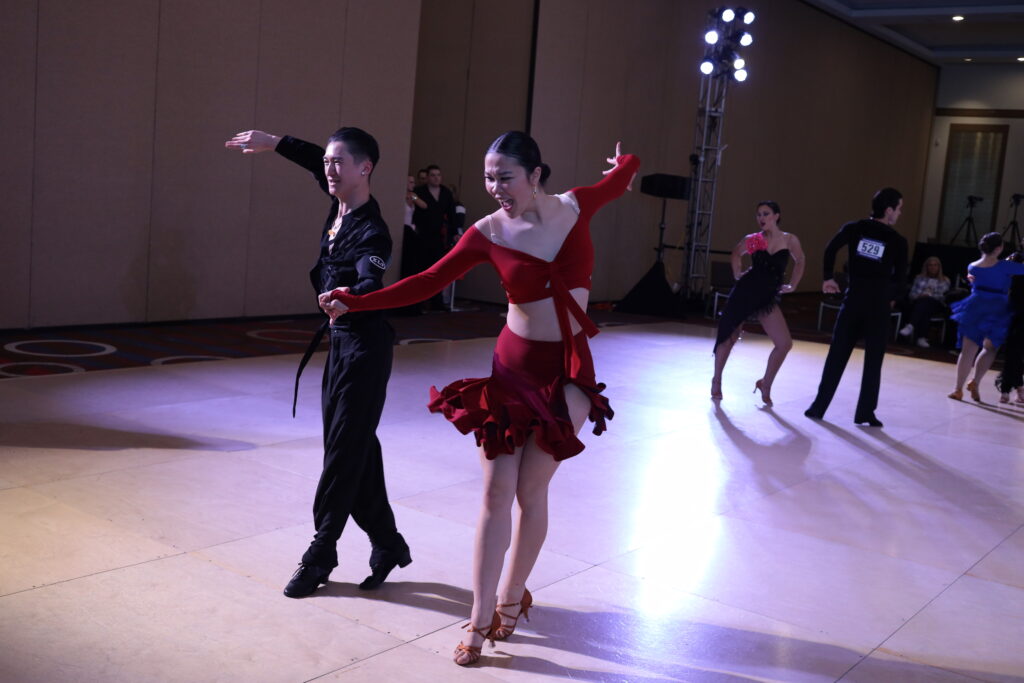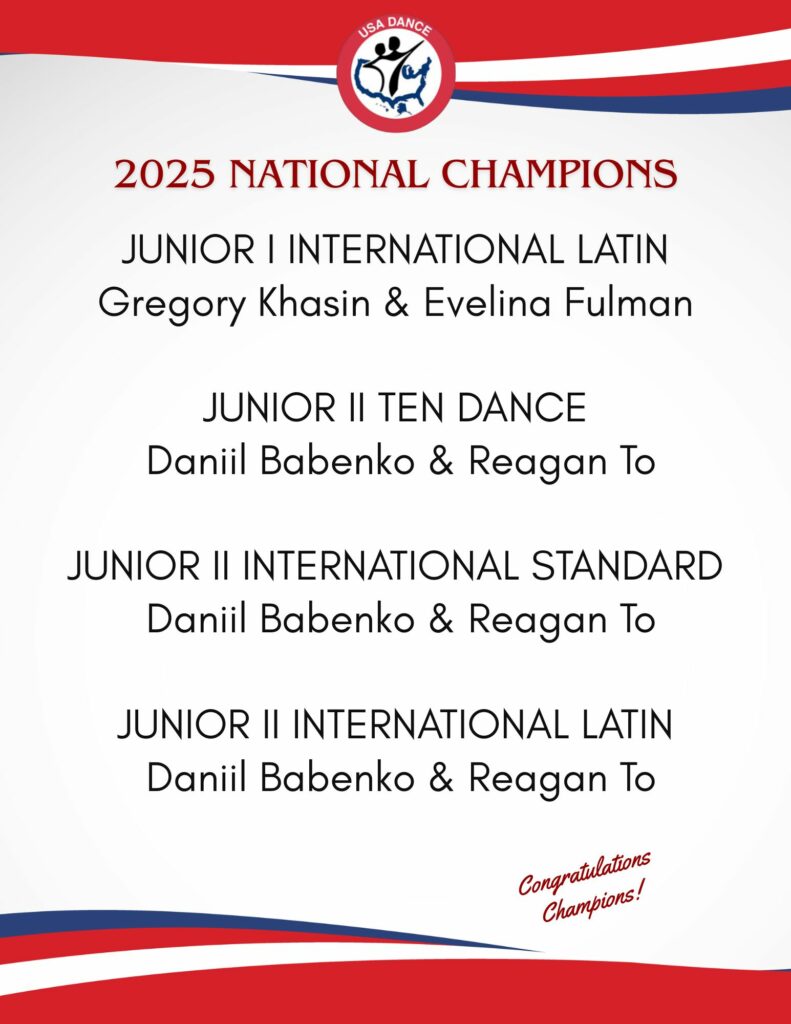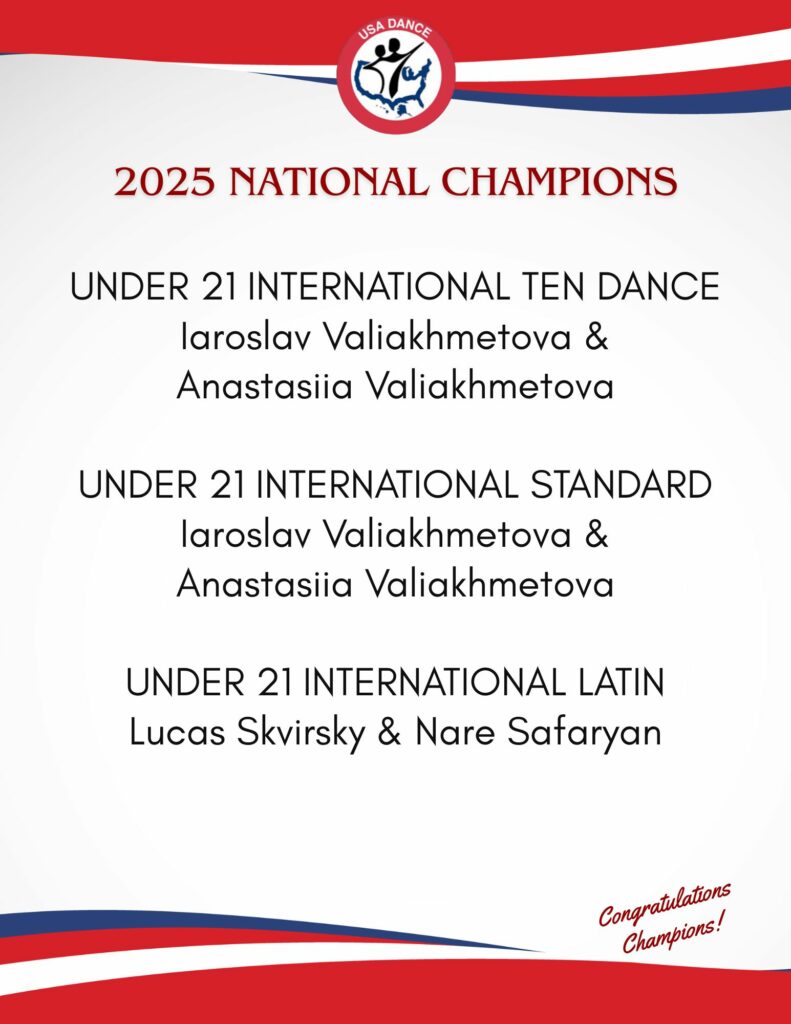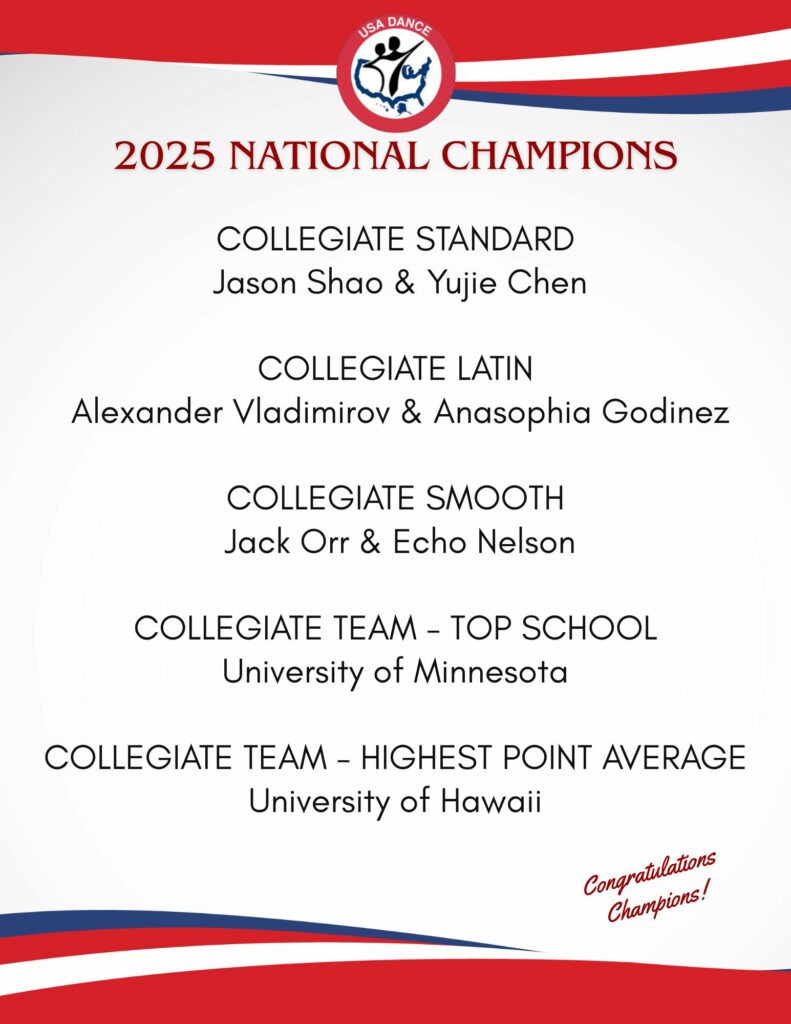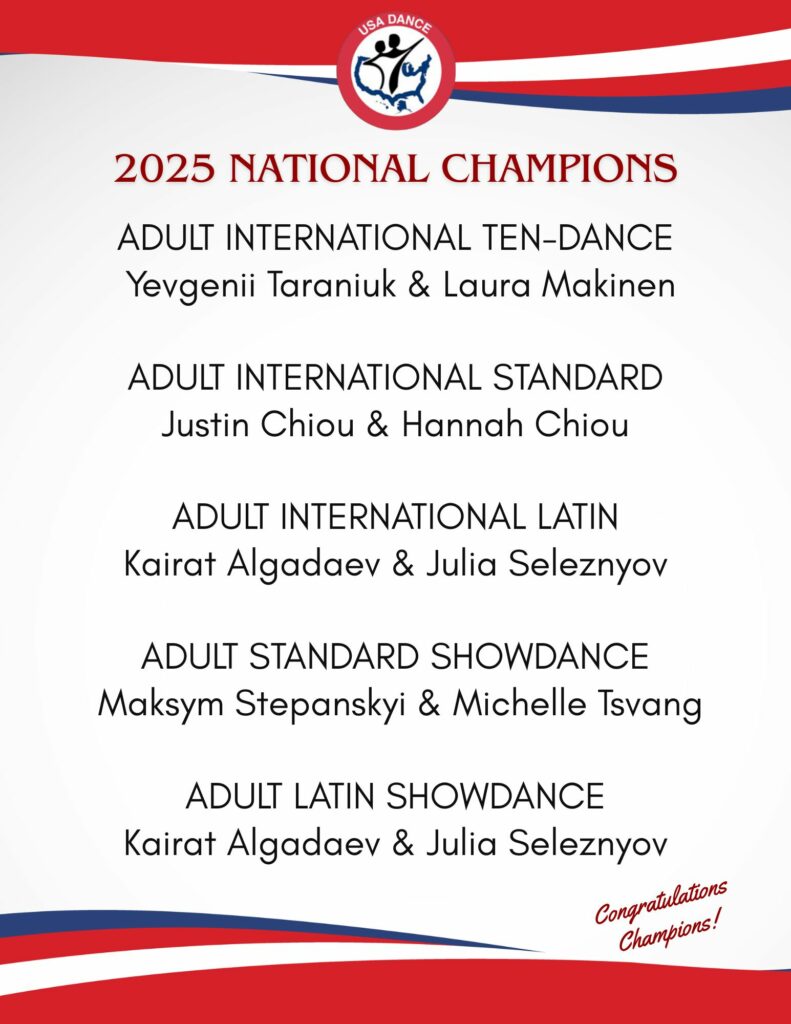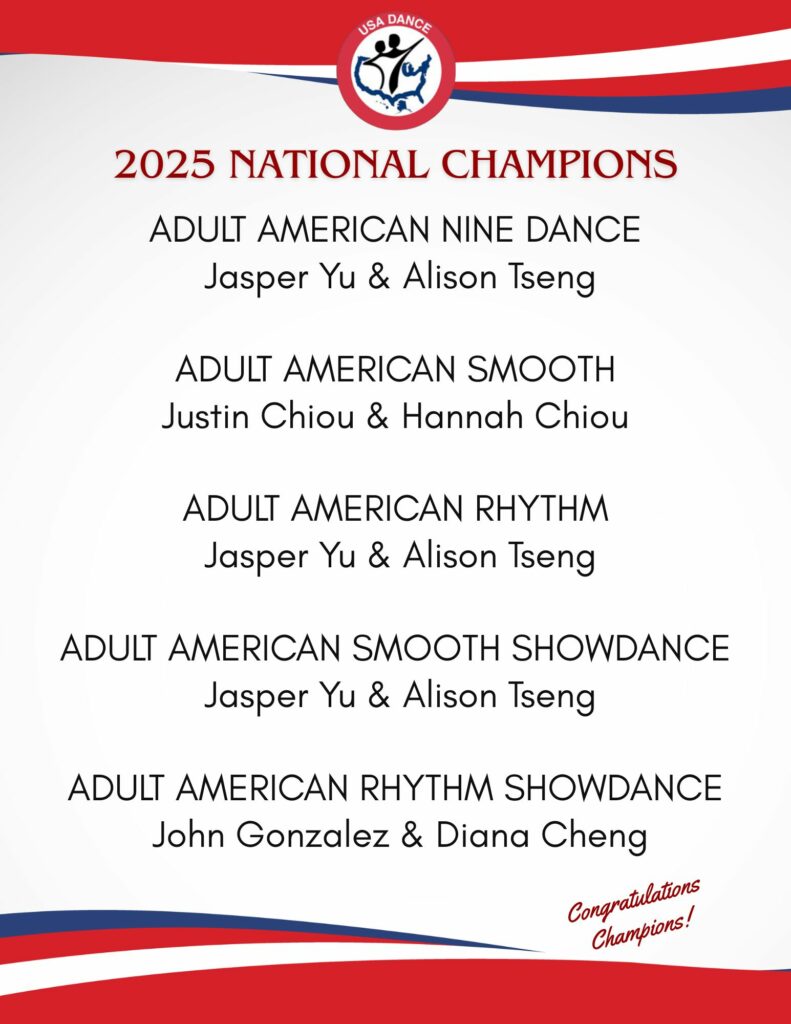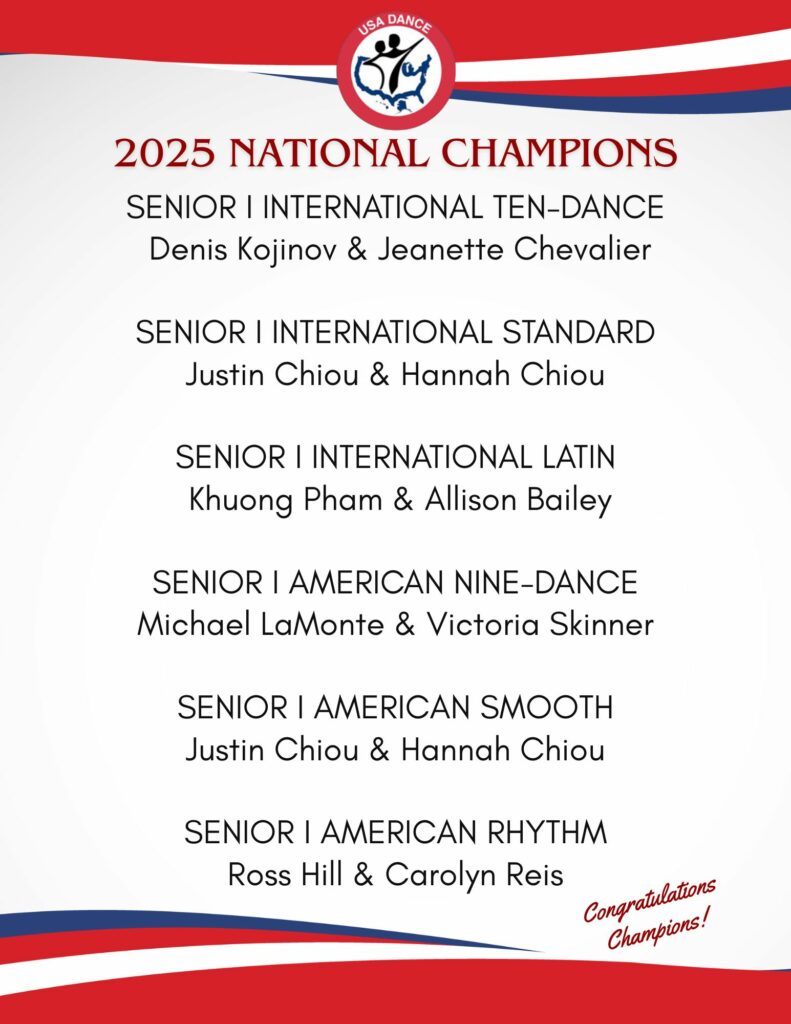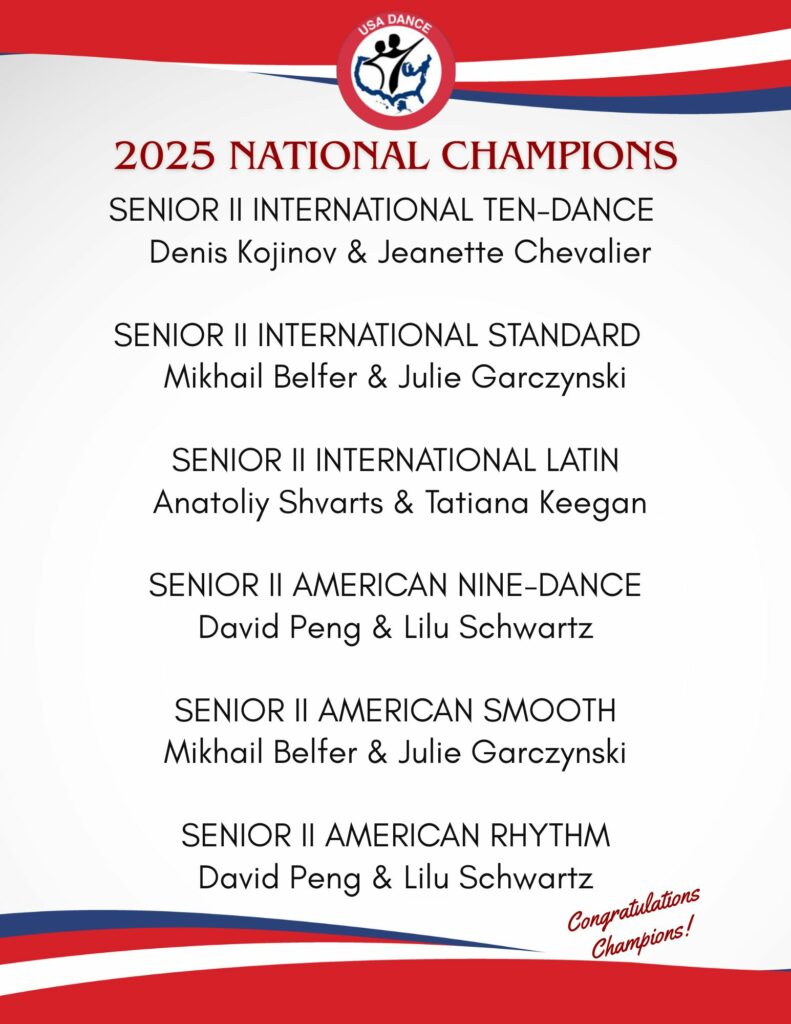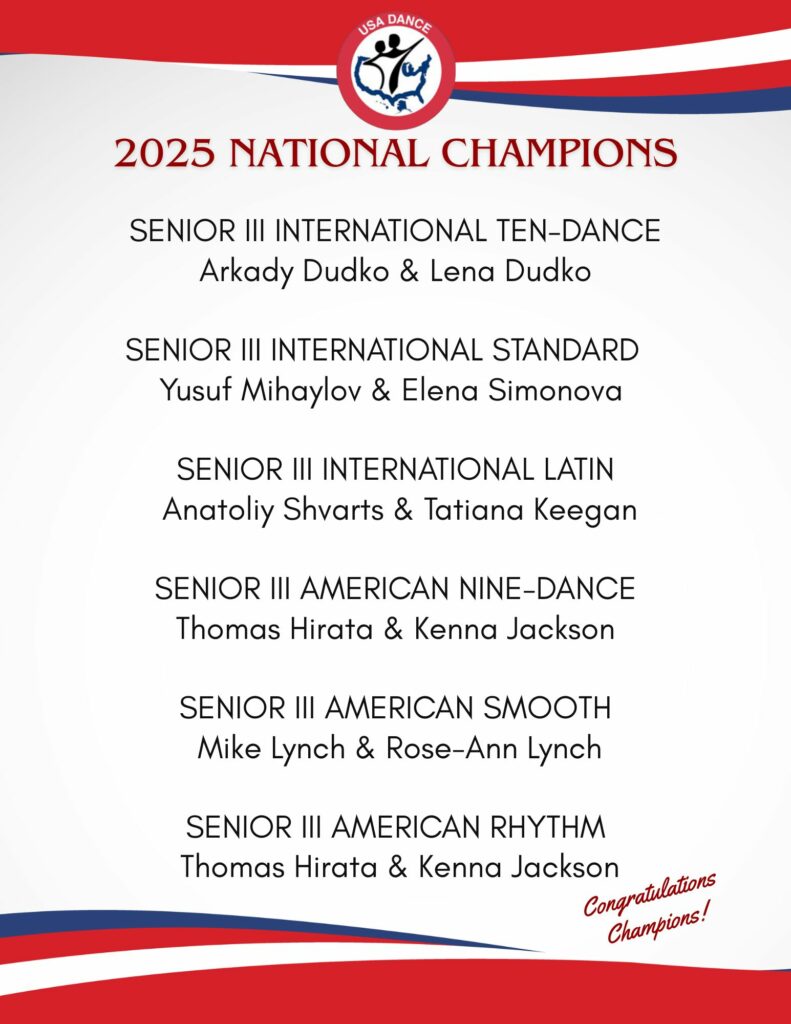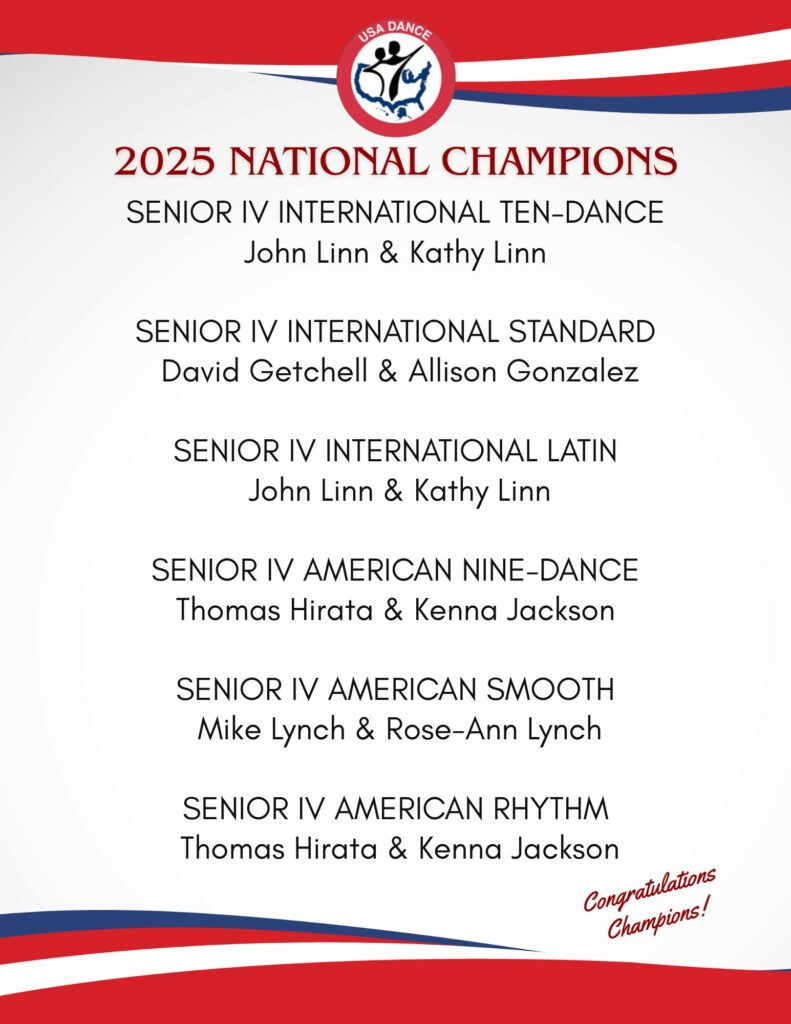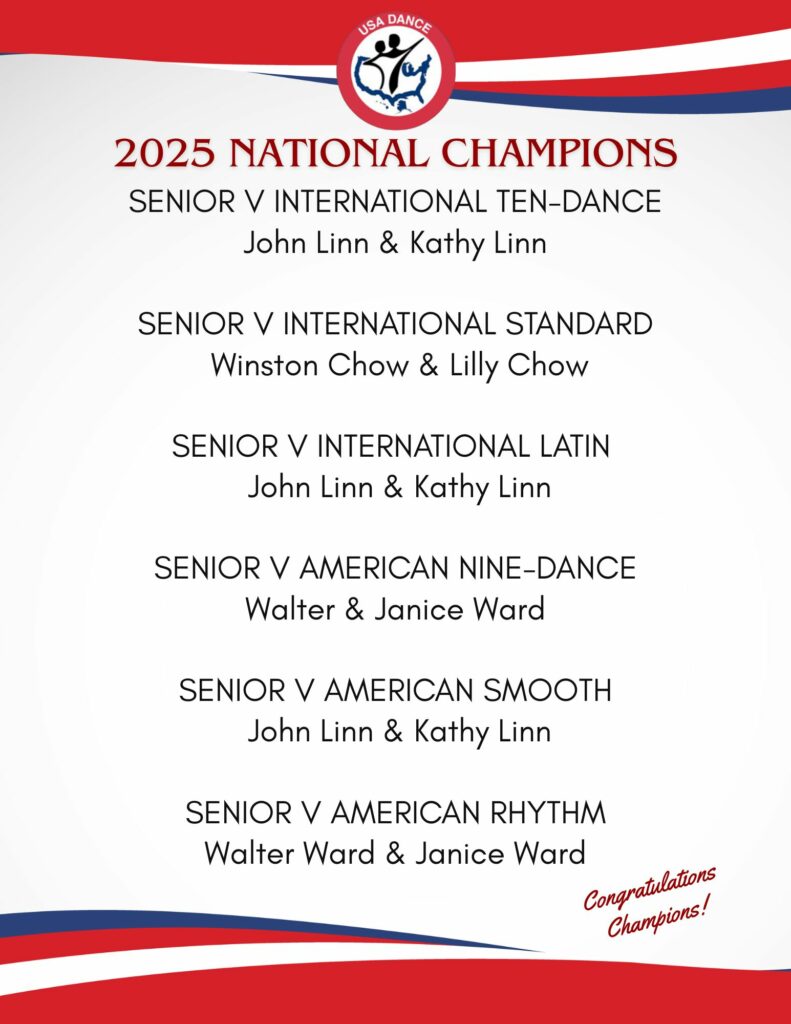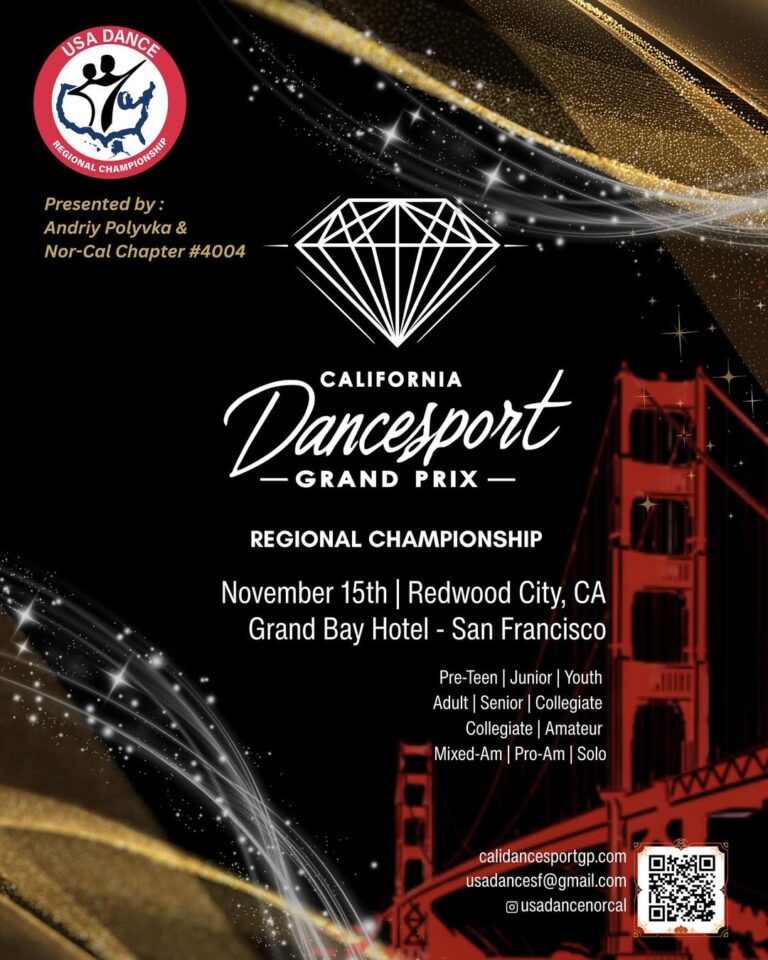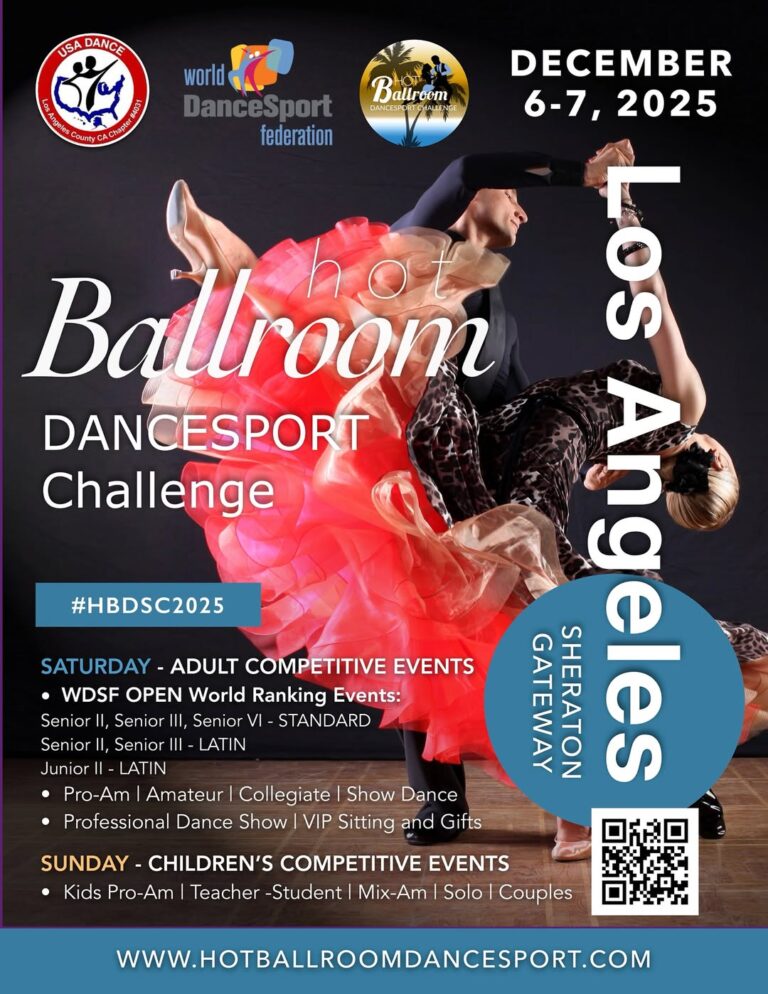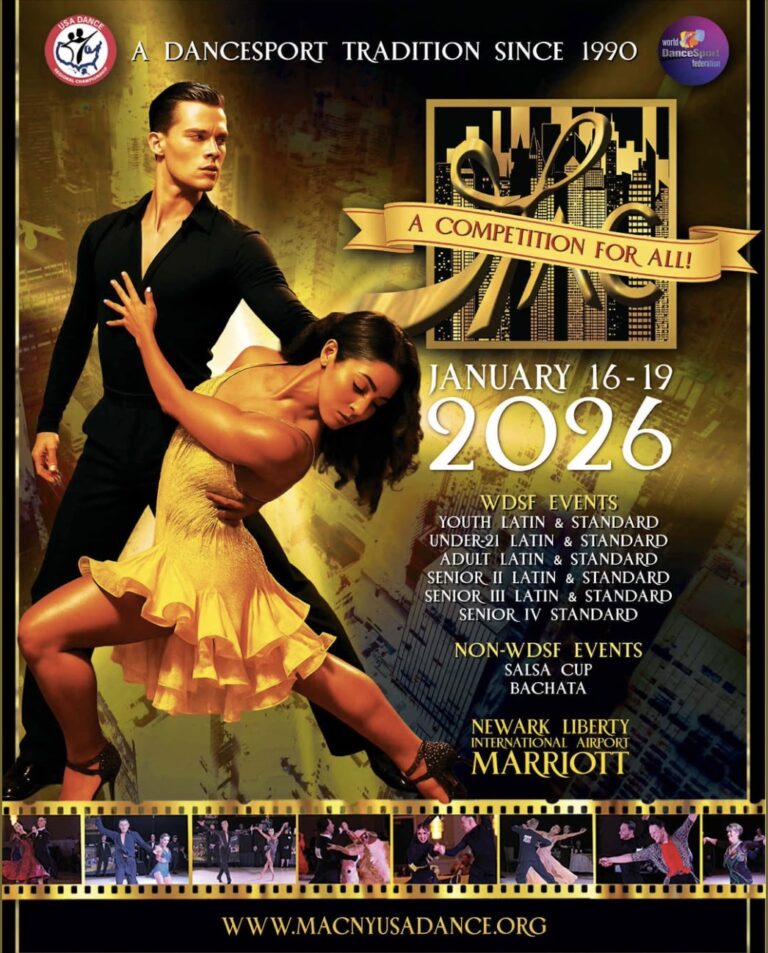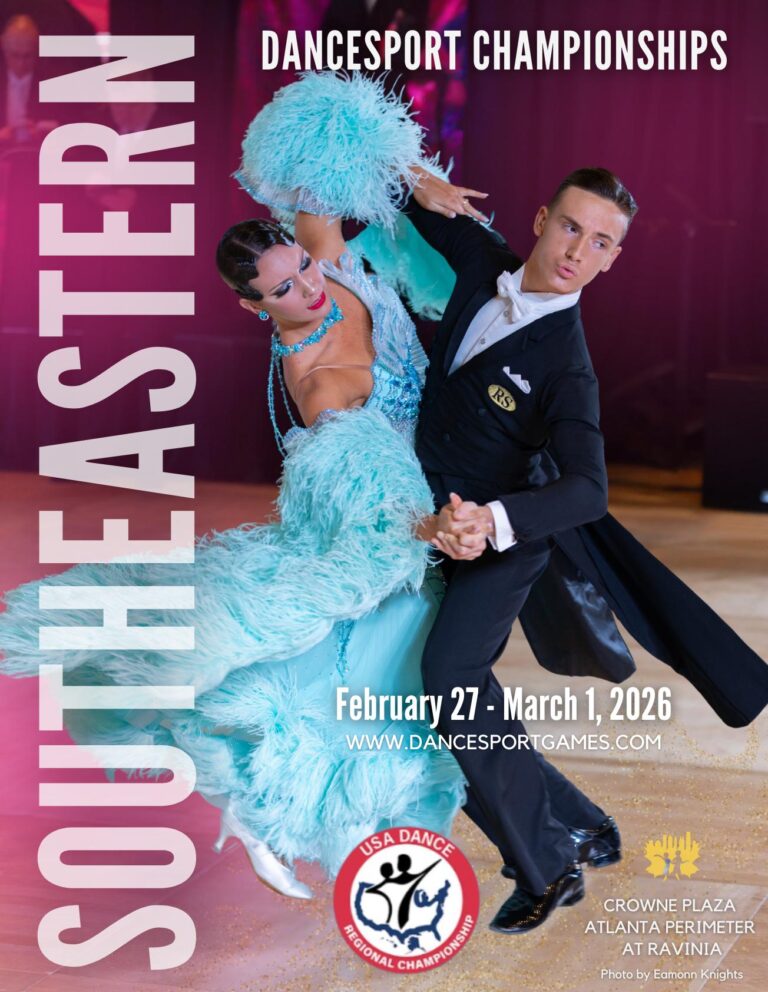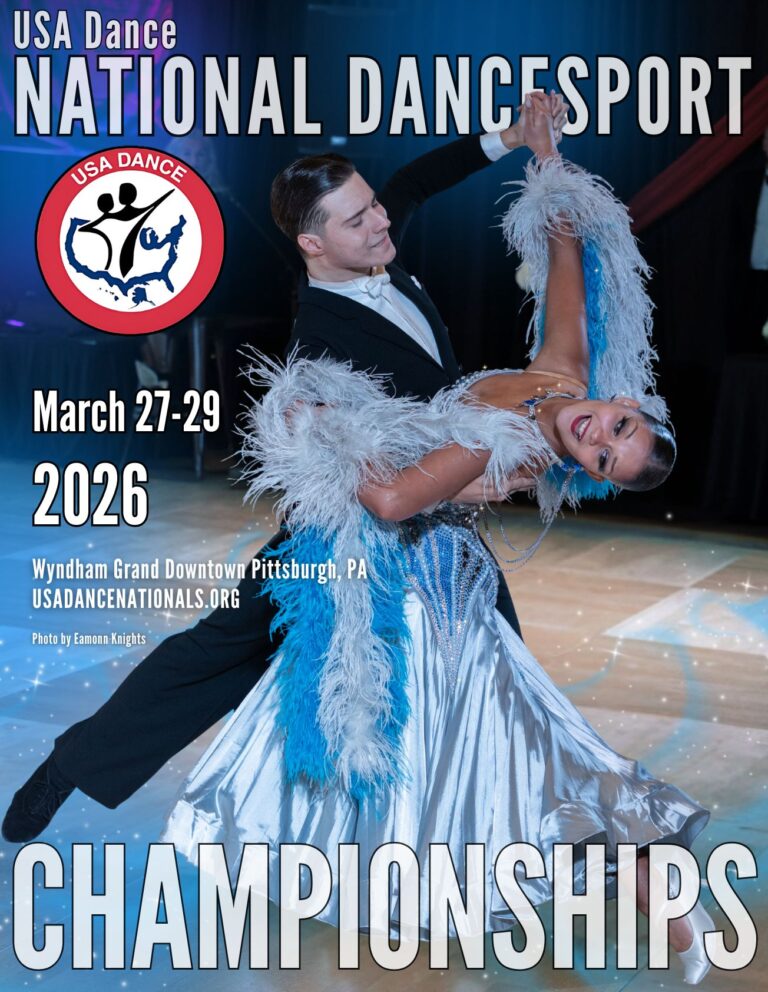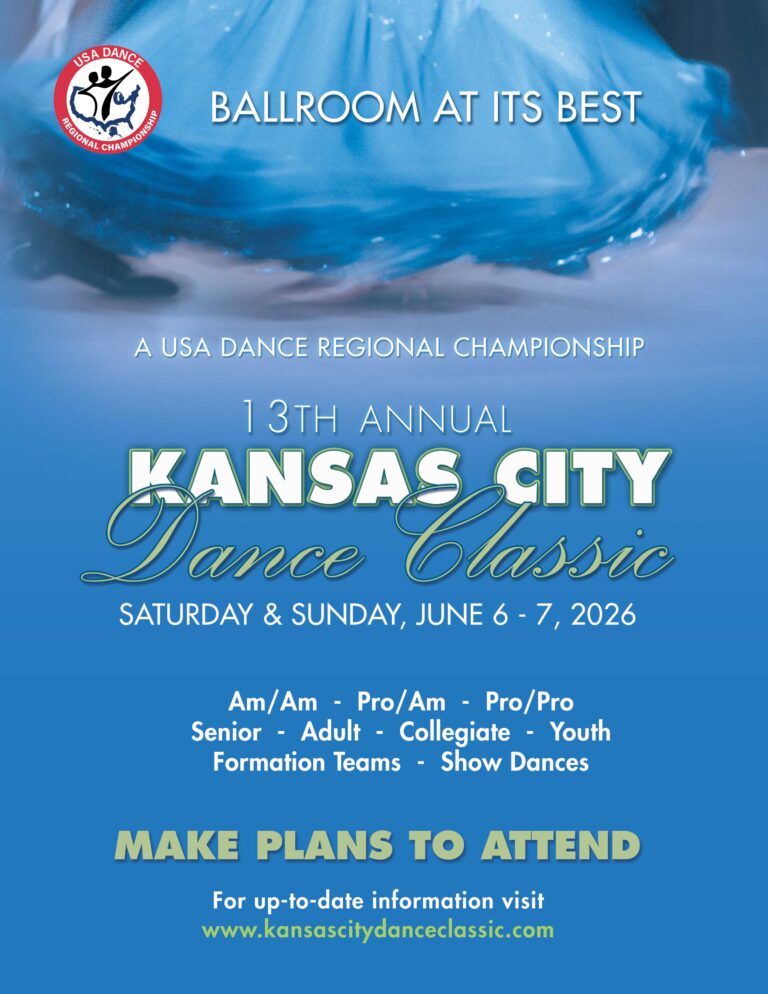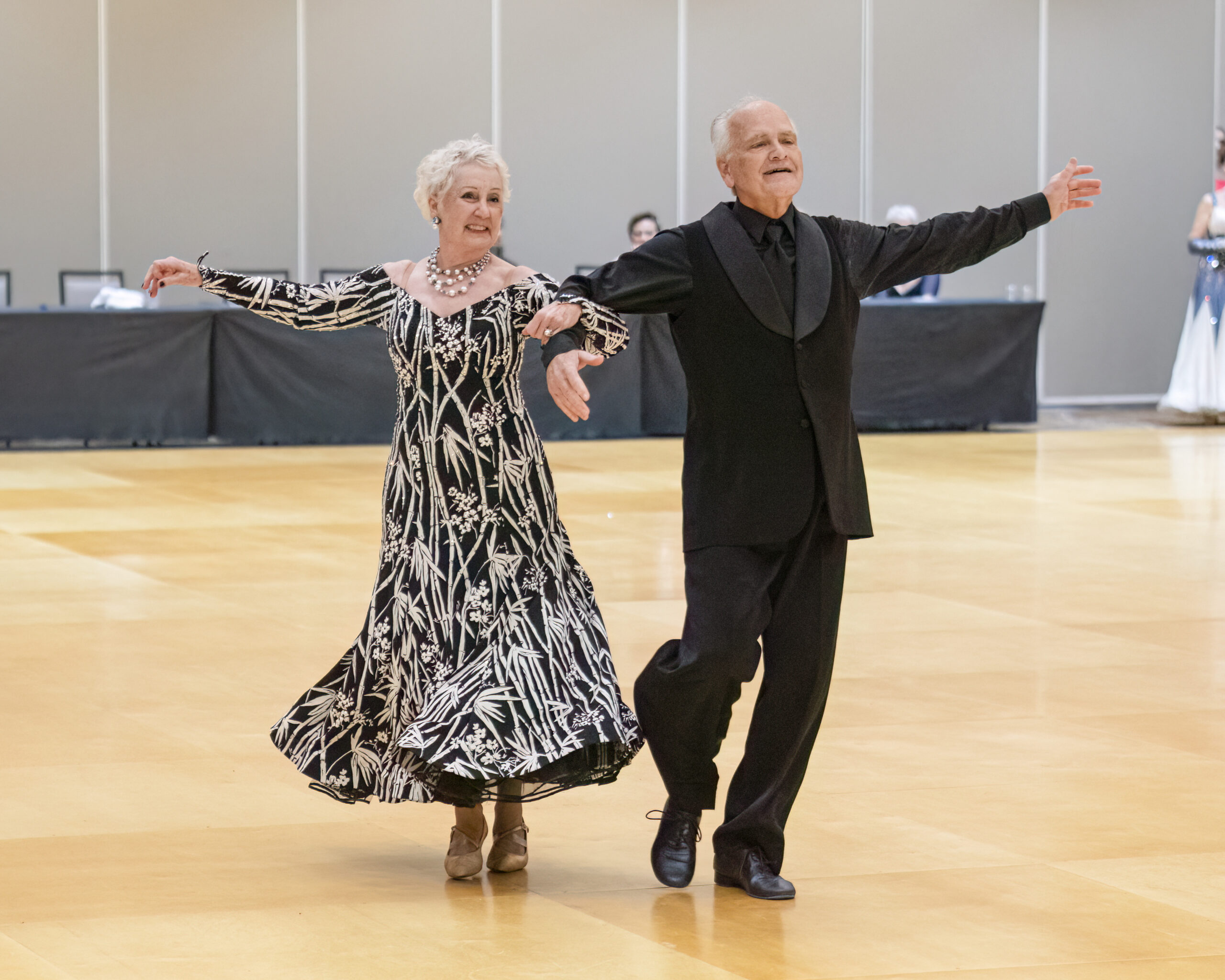Editor’s Note: The USA Dance 2025 DanceSport Rulebook went into effect on April 1, 2025. Here you will find a Summary of the 2025 Rulebook Changes that will be in effect until the 2026 Nationals, March 27-29, 2026.
Rules Committee Note:
References to WDO in the Rulebook: The Board’s intention is to allow WDO judges to be used as officials at USA Dance competitions and to allow WDO non-USA based athletes to compete in our events. Those should be the only references left in the Rulebook. We do not prohibit organizers from running WDO events nor do we prohibit athletes from joining WDO and competing at their events, but this does not need to be referenced in our rulebook as it is done outside of our rulebook. All references to WDO in the Rulebook have been handled as per the foregoing policy. The WDO logo was removed from the first page of the Rulebook.
Lev Vesnovskiy, Chair of the Eligibility and Discipline Committee, made all the necessary changes regarding the Proficiency Points System.

Proficiency Point System: You will see that there is a definition of a Championship event but all references to Novice, Pre-Championship, and Championship proficiency levels have been removed and replaced by Open. You will also see N-class = Pre-Bronze, E-class = Bronze; D-class = Silver; C-class = Closed Gold or Open Gold; and B-class, A-class, and S-class = Open.
The Invigilation Committee has developed a Pre-Bronze Syllabus which will correspond to N-class and which is included in Appendix B.
We have added Fellow/WDSF Certified International Adjudicator certified at the A++, B++, C++, D++, and E++ levels.
Local Competitions are renamed Provisional Challenge Competitions.
Solo Proficiency is renamed Solo Competitor.
For Provisional Challenge Competitions, the requirement for any certified officials except the Scrutineer and the Chair of Adjudicators has been removed in exchange for removing the opportunity to qualify for Nationals at these competitions. Participants in a Provisional Challenge Competition may be Social Dance members of USA Dance. The recommendation for the minimum number of judges to be hired was removed as we do not specify this for any other category of competition.
Any person who organizes and/or owns a Challenge, Regional, or Nationals competition cannot dance in that Challenge, Regional, or Nationals competition that they organize or own.
Definitions of Competition Organizer and Competition Owner have been added.
Proficiency Points and Ranking Points are awarded as follows:
Competition | Proficiency Points | Ranking Points |
State Competition | No | No |
Provisional Challenge Competition* | No | No |
Collegiate Challenge Competition* | No | No |
Challenge Competition | Yes | Yes |
Regional Championships | Yes | Yes |
National Championships | Yes | Yes |
WDSF Events at USA Dance Competitions | Yes** | Yes |
World Championships outside US | No | No |
* If a Provisional or Collegiate Challenge has greater than 75% USA Dance certified judges, they may award proficiency Points.
**If a USA Dance approved scrutineering system is used.
 Continental Titles were removed as they are not being used.
Continental Titles were removed as they are not being used.
The Teacher/Student competition event category has been removed. The Mixed Proficiency event category is an Amateur event with a judged and an unjudged partner. There is no age restriction for the unjudged partner.
Table 3 lists the required dances for Provisional Challenge, Collegiate Challenge, and Challenge competitions and Table 19 lists the required dances for Regional and National Championships. They are similar but not identical. Table 3 was modified to require all 5 dances (4 dances in Smooth) for C-class (Gold, Open).
An Athlete can qualify for Nationals by achieving six (6) points in the same event (same proficiency class, same age category) based on the following table:
Competition Level | Points received by dancing at Competition |
Chapter/Collegiate Club Competition | 0 |
State Competition | 0 |
Provisional Challenge Competition | 0 |
Collegiate Challenge Competition* | 2 points for Junior/Youth and College Athletes, 1 point for Adult and Senior (35+) Athletes |
Challenge Competition | 2 |
Regional Championship | 4 |
Regional Championship placing in the top 50% | 6 |
Table 8. Qualification for National Championships
*A competitor only earns a qualification point at a Collegiate Challenge Competition if they are a member of USA Dance at the time of the competition and the qualification is only for the competitor’s actual age category.
Table 8 was changed to award 2 points to Junior/Youth and Collegiate Athletes at Collegiate Challenge Competitions.
Newcomer events and classifications were eliminated.
The rule allowing Senior 1 through Senior V competitors to dance in more than two consecutive age categories was removed.
Adding a Senior VI age category was considered, but not included because it would make scheduling Nationals more difficult due to time constraints. Organizers are free to offer Senior VI events without it being in the Rulebook.
The Pro/Am Master category was removed.
Only Regionals and Nationals are required to offer Pro/Am Scholarship events.
The Pro/Am age categories were changed from A, B, C, D to A1, A2, A3, A4 to avoid confusion with the proficiency classifications.
5.3.9.5.12 states that complaints about the Vice President Ballroom Division should be sent to the Senior VP. 7.2.1.5 states that complaints about the Vice President Ballroom Division should be sent to the Executive Committee. 7.2.1.5 is changed to Senior VP to be consistent.
Collegiate Challenge Competitions contribute towards the eligibility to compete in the USA Dance National Ballroom DanceSport Championships only if the competitor is a member of USA Dance at the time of the competition and only in the competitor’s actual age category. So, if you are a Senior IV dancing with a Senior II and thus usually dance Senior I and II, you will gain the 1 qualifying point for your Senior II events since that is the age category that claims the partnership. You would need to qualify in Senior I events at other competitions if you wanted to dance them at Nationals.
For Regional Championships holding WDSF World Championships or World Cups, the requirement to put funds in escrow to cover the cost of reimbursing USA Dance if the event is cancelled was removed as it was not being enforced.
Regional Championships are allowed but not required to hold Pro/Am and Professional events. The minimum amount of prize money required for Professional events at Regional Championships was reduced.
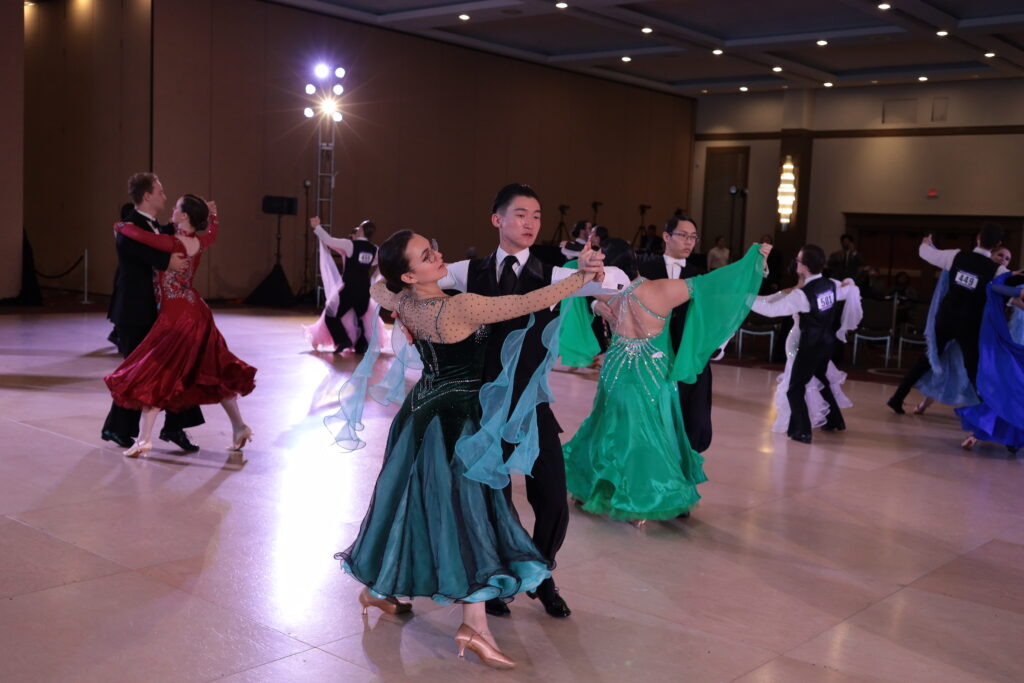 Table 18 Schedule of Sanctioning Fees: The sanctioning fees for Provisional Challenge, Challenge, and Regional Championship Competitions were changed to a flat Pre-Event Sanctioning Fee and a Post-Event Sanctioning Fee based on a charge per competitor. Collegiate Challenge Competitions are charged a flat fee.
Table 18 Schedule of Sanctioning Fees: The sanctioning fees for Provisional Challenge, Challenge, and Regional Championship Competitions were changed to a flat Pre-Event Sanctioning Fee and a Post-Event Sanctioning Fee based on a charge per competitor. Collegiate Challenge Competitions are charged a flat fee.
Table 19 gives the event requirements for Regional and National Championships. Lev Vesnovskiy proposed changing the required dances to be more consistent with international dance pairings. This means that Viennese Waltz, Paso Doble, Jive, and Mambo would be required at lower proficiency/syllabus levels than we currently require. We will continue to require the current dance pairings until after 2026 Nationals. At that time, the new dance requirements will go into effect.
The criteria for an adjudicator to regain their Professional Athlete status has been moved from 6.1.2 to Section 4.4 where rules pertaining to Professional Athletes are located. 6.1.2 has been edited to remove other material which appeared to be inaccurate.
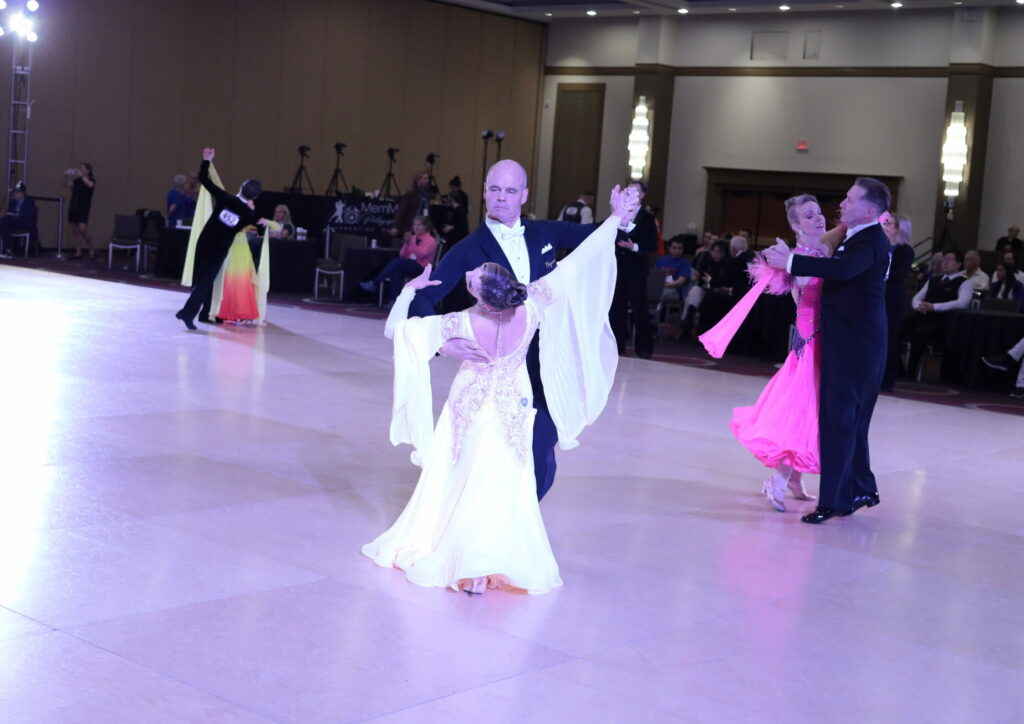 The process of selecting USA Dance representatives to World Events has been edited. If two representatives are to be selected for a world event, the nomination process has been adjusted to give more weight to placement at Nationals and less to Ranking Points.
The process of selecting USA Dance representatives to World Events has been edited. If two representatives are to be selected for a world event, the nomination process has been adjusted to give more weight to placement at Nationals and less to Ranking Points.
Where two couples are chosen to attend a World Event, in most cases the first couple will receive a higher stipend amount and the second couple will receive a lower stipend amount.
- If the stipend listed was $2000, the first couple receives $2500 and the second couple receives $1500.
- If the stipend listed was $1500, the first couple receives $2000 and the second couple receives $1000.
- If the stipend listed was $1000, each couple receives $1000.
Representative Stipends will be awarded as reimbursement for expenses paid by the Athlete rather than as a scholarship amount as this avoids the Athlete having to pay taxes on the stipend. Athletes will have to submit receipts in order to be reimbursed.
Appendix E Examiner Assessment was removed as we no longer have a Professional Division and we don’t do examinations ourselves. (That was true at the time the Rulebook was approved.)
Appendix F Marketing has been added and will be renamed Appendix E.
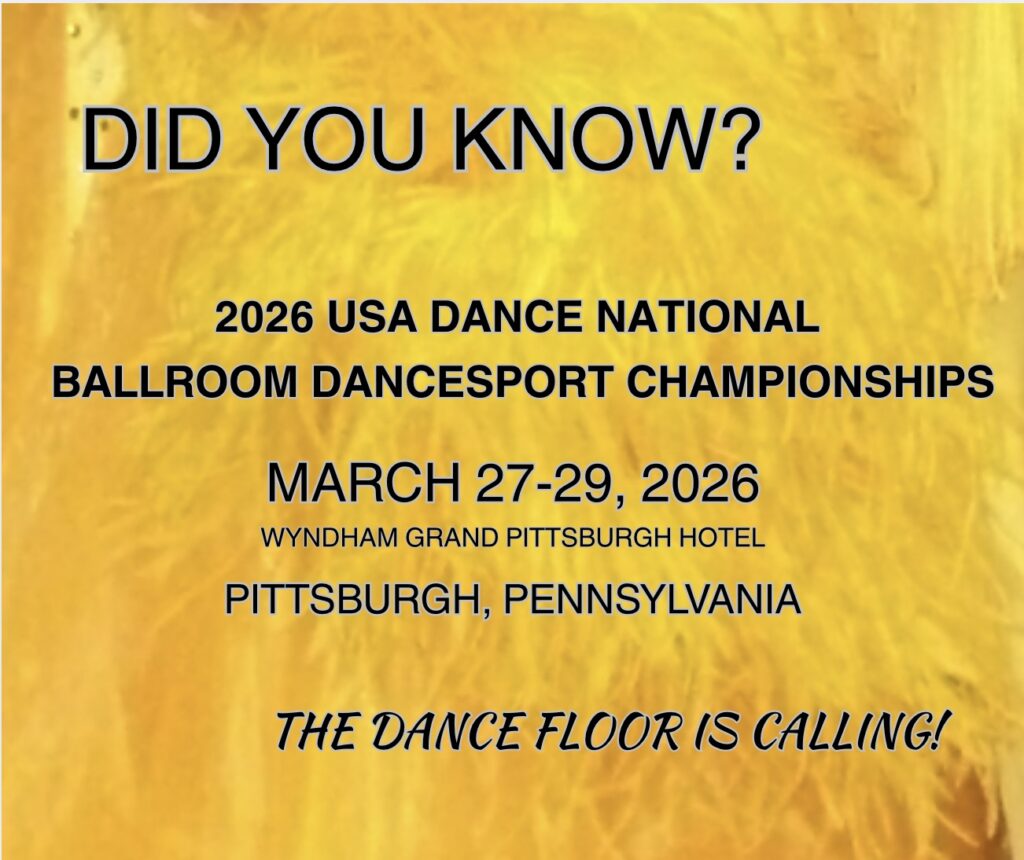
USA Dance Rulebook
USA Dance Rulebook, v.30 contains the rules and regulations that govern DanceSport competitions, competitor eligibility, and conduct. The rulebook governs USA Dance DanceSport competitions, Athletes and Officials.
USA Dance Rulebook Appendix A: Dress Code (2025) – contains revisions to the costume rules in effect on 4-22-2025.
USA Dance Rulebook Appendix B: Syllabus Guidebook (2025) – A supplement to the DanceSport Rulebook provided by USA Dance Academy for developing Syllabus Compliant Competition Choreography and Groupings for all Medalist Levels and Disciplines.
USA Dance Rulebook Appendix C: Code of Conduct (2025) – provides a framework of standards for conduct and ethics for participants in DanceSport competitions.
USA Dance Rulebook Appendix D: Proficiency System Pilot (2025) – provides a framework of the proficiency system for participants in DanceSport competitions. Proficiency Points Quick Overview
To see your current Proficiency Points, please click here.
USA Dance Rulebook Appendix E: Marketing (2025) – Provides guidelines for the marketing of competitions.

